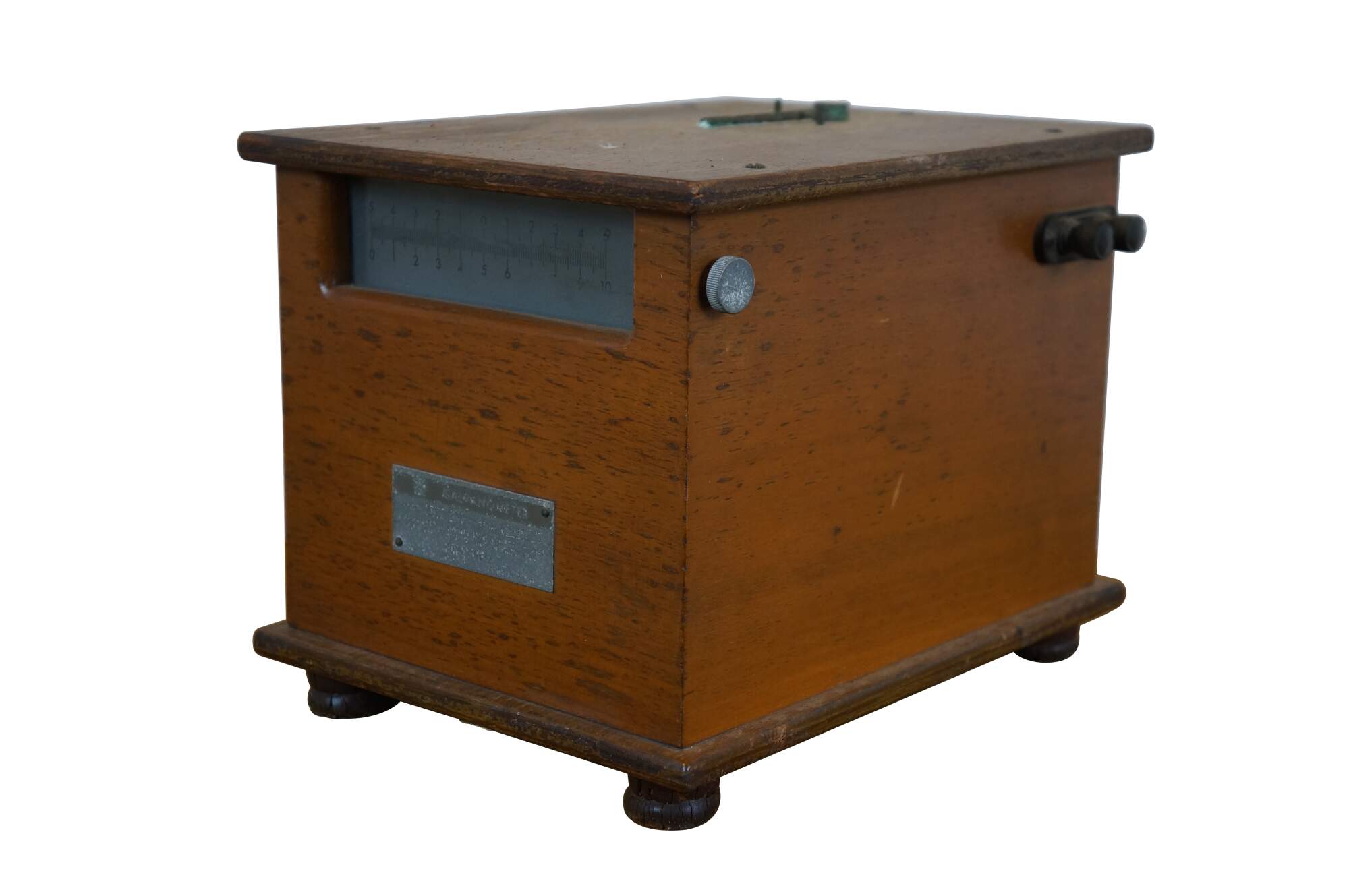
Shipping:
Free Shipping Included
Delivery:
Estimated 2-15 Business Days
Payments:
Credit Card, Check, Cash, PayPal, Apple Pay, Venmo
Returns:
30 Days 100% Money Back Guarantee, Buyer Pays Return Shipping
Description
Circa mid 20th century Honeywell Galvanometer - Model 3424 - Serial G-2932. Wooden case with rubber feet.
"A galvanometer is an electromechanical measuring instrument for electric current. Early galvanometers were uncalibrated, but improved versions, called ammeters, were calibrated and could measure the flow of current more precisely. Galvanometers work by deflecting a pointer in response to an electric current flowing through a coil in a constant magnetic field. The mechanism is also used as an actuator in applications such as hard disks. Galvanometers came from the observation, first noted by Hans Christian Ørsted in 1820, that a magnetic compass's needle deflects when near a wire having electric current. They were the first instruments used to detect and measure small amounts of current. André-Marie Ampère, who gave mathematical expression to Ørsted's discovery, named the instrument after[1] the Italian electricity researcher Luigi Galvani, who in 1791 discovered the principle of the frog galvanoscope – that electric current would make the legs of a dead frog jerk. Galvanometers have been essential for the development of science and technology in many fields. For example, in the 1800s they enabled long-range communication through submarine cables, such as the earliest transatlantic telegraph cables, and were essential to discovering the electrical activity of the heart and brain, by their fine measurements of current. Galvanometers have also been used as the display components of other kinds of analog meters (e.g., light meters and VU meters), capturing the outputs of these meters' sensors. Today, the main type of galvanometer still in use is the D'Arsonval/Weston type." (Source: Wikipedia)
"In 1906, Mark Honeywell founded the Honeywell Heating Specialty Company in Wabash, Indiana, to manufacture and market his invention, the mercury seal generator. As Honeywell's company grew, thanks in part to the acquisition of Jewell Manufacturing Company in 1922 to better automate his heating system, it began to clash with the Electric Heat Regulator Company now-renamed Minneapolis Heat Regulator Company. In 1927, this led to the merging of both companies into the publicly-held Minneapolis-Honeywell Regulator Company. Honeywell was named the company's first president, alongside W.R. Sweatt as its first chairman. In 1931, Minneapolis-Honeywell began a period of expansion and acquisition when they purchased the Time-O-Stat Controls Company, giving the company access to a greater number of patents for their controls systems. W.R. Sweatt and his son Harold provided 75 years of uninterrupted leadership for the company. W.R. Sweatt survived rough spots and turned an innovative idea – thermostatic heating control – into a thriving business. Harold took over in 1934, leading Honeywell through a period of growth and global expansion that set the stage for Honeywell to become a global technology leader. 1934 marked Minneapolis-Honeywell's first foray into the international market, when they acquired the Brown Instrument Company and inherited their relationship with the Yamatake Company of Tokyo, a Japan-based distributor. With the outbreak of World War II, Minneapolis-Honeywell was approached by the US military for engineering and manufacturing projects. From the 1950s until the mid-1970s, Honeywell was the United States' importer of Japanese company Asahi Optical's Pentax cameras and photographic equipment. The beginning of the 1970s saw Honeywell focus on process controls, with Honeywell merging their computer operations with GE's information systems in 1970, and later acquiring GE's process control business. In 1980, Honeywell bought Incoterm Corporation to compete in both the airline reservations system networks and bank teller markets. Honeywell continues to operate in a wide veriety of technology sectors to this day." (Source: Wikipedia)
Condition
Good Overall - Gentle wear; rubber feet cracking
Dimensions
10" x 7.5" x 7.75" (Width x Depth x Height)